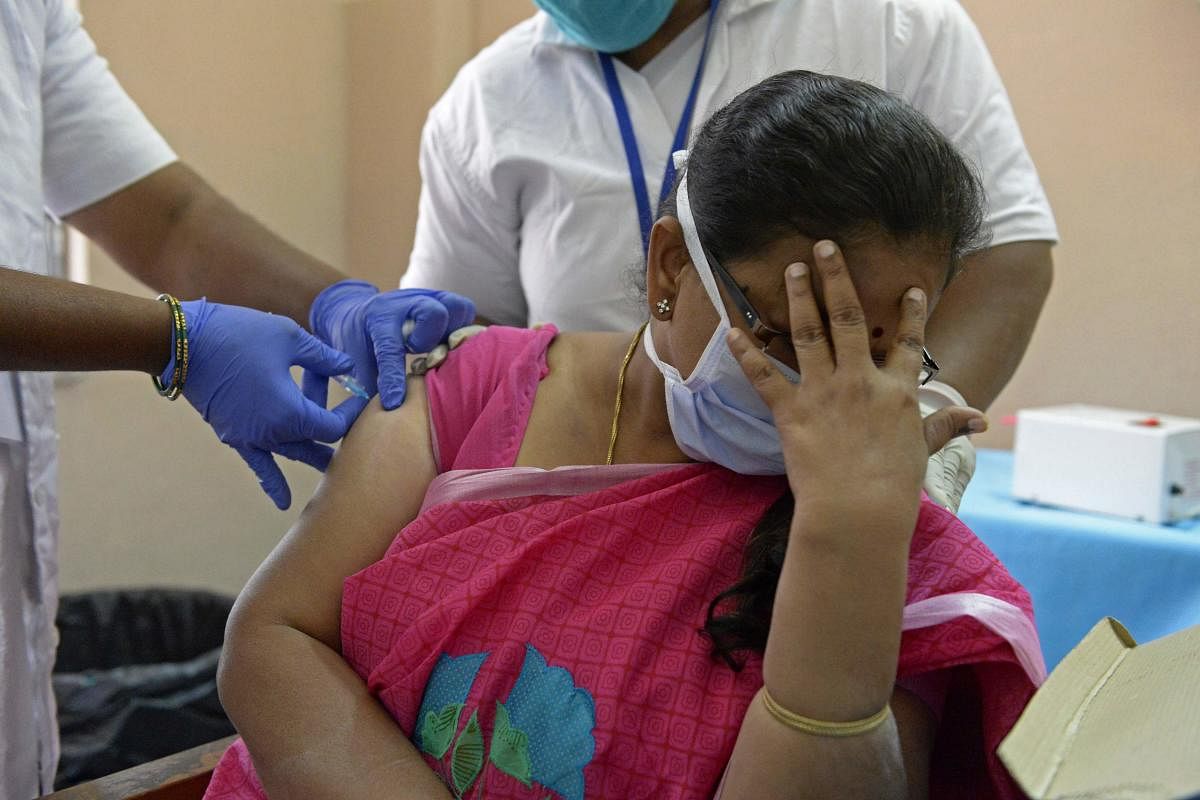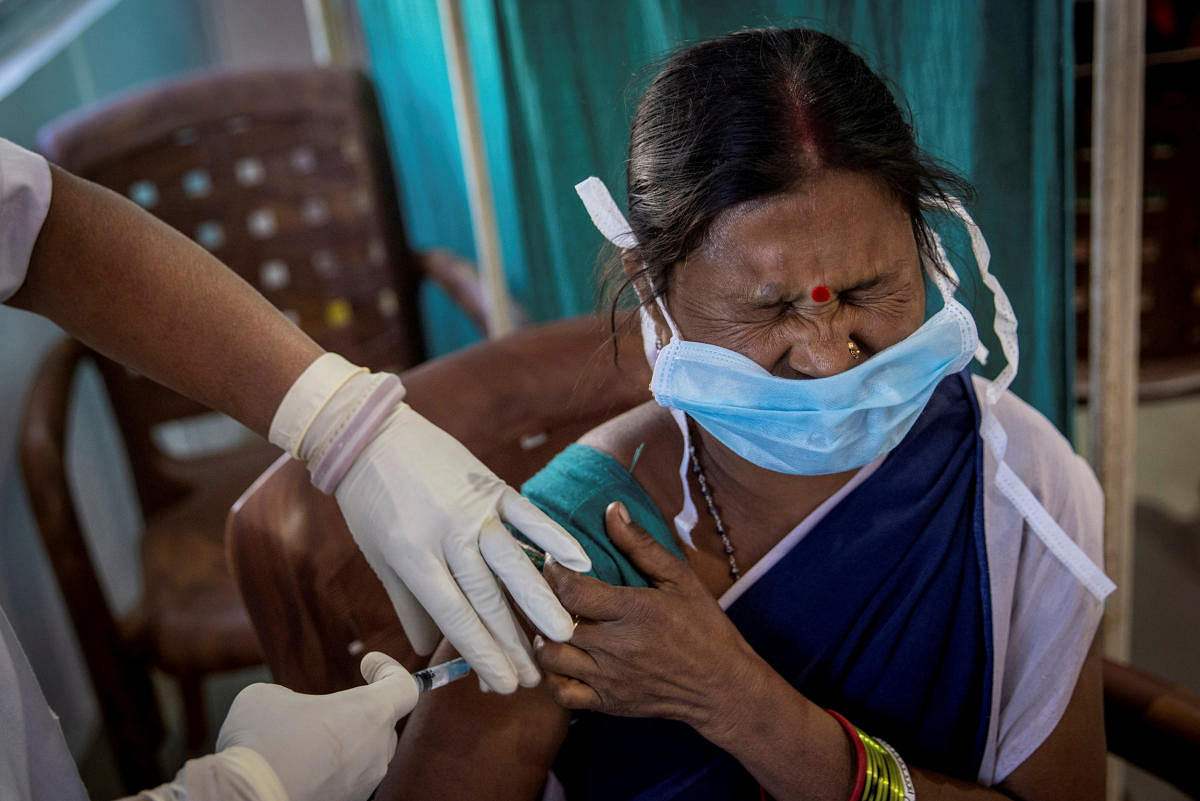

Three months before India rolled out its mega exercise to administer Covid-19 vaccines to 30 crore individuals, two independent research groups waved red flags about the hurdles that may crop up. “Efficacy and politics influence public trust in Covid-19 vaccine,” Cornell University researchers warned in a survey. “The problem of vaccine hesitancy is strongly related to lack of trust in the government,” cautioned US and European researchers in another study in Nature Medicine.
One week into the drive, both factors — big questions on vaccine efficacy and lack of trust in the government’s obey-me approach — are at play. Due to high level of vaccine hesitancy, more than 45% of the targeted population comprising doctors, nurses and hospital staff didn’t turn up, citing one reason or the other. Worryingly, the number of such absentees is on the rise.
Read | If poor countries go unvaccinated rich ones will pay, a study says
Highly controversial regulatory decisions, major technical glitches with the software that lies at the core of this exercise and the administration’s inability to engage with people compounded the hesitancy factor. In Tamil Nadu, only 40% of healthcare workers turned up for the jab. Up north in Punjab, it was just 28%.
“Pre-existing trust deficit will increase hesitancy if it comes across that the decision is based on considerations other than science. Transparency increases trust, but even before that, there is a question of accountability. The latter is about how an important decision is reached while the former enables the public to access the modalities of that decision,” observed virologist Shahid Jameel, director of the Trivedi School of Biosciences at Ashoka University.
No efficacy data
The manner in which the Central Drug Standard Control Organisation cleared the two vaccines and the Centre’s overt push for Bharat Biotech’s so-called desi vaccine (Covaxin) bely both transparency and accountability.
The regulator’s U-turn on Covaxin after 48 hours without providing any justification — at least in the public domain — and clearance for commercial use without efficacy data have weighed on people’s mind, victimising the Serum Institute of India’s Covishield in the process. Though Covishield has some efficacy data from other parts of the world, the data is messy.
“A key component of India’s Covid-19 vaccine anxiety is the wholly avoidable controversy that the government has created over the approval and implementation of Covaxin. The clearance came without even preliminary evidence for efficacy, and yet the vaccine is being given to people without any real choice (and with the demand to sign a consent form). No wonder people have vaccine anxieties,” said senior scientist Satyajit Rath, formerly with the National Institute of Immunology, Delhi. “We do not know the efficacy of both vaccines from trials in India, and at least one vaccine from anywhere in the world. We are flying blind,” said Jameel.
Negative publicity
"The negative publicity about Covaxin must be taking a toll on Covishield. The government should not have clubbed the vaccines. They could have just released Covishield and waited for Covaxin to finish the necessary trials," added another public health researcher.
The consequences are for everyone to see in many states.
Also Read | Let's have a duel: Amit Shah slams Covid-19 vaccine critics
"The hesitancy in Tamil Nadu is real and I will not blame the people for the lag. The governments failed to instil confidence in people that the vaccines are safe,” said a senior Tamil Nadu doctor, who was at the forefront of the Covid-19 fight. Maharashtra’s Public Health and Family Welfare Minister Rajesh Tope admitted that there was vaccine hesitancy in the state and Mumbai, where only half of the healthcare workers turned up for the shots.
"There are doubts among people. The immunity will kick in 42 days after the first shot, as the vaccine has to be taken again on the 28th day... only then will the efficacy be known at the ground level,” said Suhas Pingle, chairman, action committee, Indian Medical Association (IMA), Maharashtra.
Another major challenge before the government is to win people’s trust without persuasions or arm-twisting, as was tried by a hospital in Jharkhand’s Koderma, which threatened salary cut for its employees if they didn't take the shots. Though the controversial order was withdrawn within half an hour, it soon became fodder for social media, adding fuel to rumour mills.
Unidirectional approach
Constant communication and public engagement is important for trust building, but the government’s approach so far is unidirectional. It is avoiding critical questions with barely any public engagement. The Drugs Controller General of India's inability to take queries on contentious decisions and his narration of the same erroneous conclusion drawn by the AstraZeneca-Oxford University team don’t help.
There are many creases that need to be ironed out if the vaccination drive has to continue with higher public participation — the government’s perceived haste in delinking post-vaccination deaths with AEFI (adverse event following immunisation) and ministers looking for "vested interests" in the blame game, rather than carrying out an introspection.
Two other challenges, a little less formidable though, are quick rectification of the ever-expanding list of glitches in the Co-WIN software and finding out more avenues to give the two doses to the primary target of 30 crore Indians. Going by the current rate, it will take nearly three years to to finish the task.
IMA Kerala Chapter secretary Gopikumar P said that in the initial days, many doctors and health workers either did not receive the intimation or got it very late, and hence, could not turn up at the allotted time. Kerala Health Minister K K Shailaja cited Co-WIN glitches as the reason for the comparatively lower vaccination rate in the initial days. Similar faults were reported from other states, compelling the Union Health Ministry to initiate a series of corrective actions within a week after the rollout.
Bigger challenge
A bigger challenge is to arrange for more people in the second phase of vaccination. India's current capacity is about three lakh people per day. If the current rate goes up to an average of two lakh a day (i.e., 67% or 2/3rd of the capacity) over the next couple of months, vaccinating three crore healthcare and frontline workers will take five months or till mid-June. The drive for the next 27 crore people will likely start when the second phase of vaccinating two crore frontline workers is still on. It will be at least late April of early May when this begins.
"At the current capacity of three lakh per day or 90 lakh per month, it will still take at least 27 months. Since everyone needs two doses four weeks apart, it will possibly take three years. We will require much more capacity to get this done faster," estimated Jameel.
The government has barely any option but to find more hands to inoculate 30 crore Indians as fast as possible if the targeted level of herd immunity is to be achieved to tame the pandemic and restore the economy.
(With inputs from Mrityunjay Bose, E T B Sivapriyan, Arjun Raghunath and Satish Jha)
